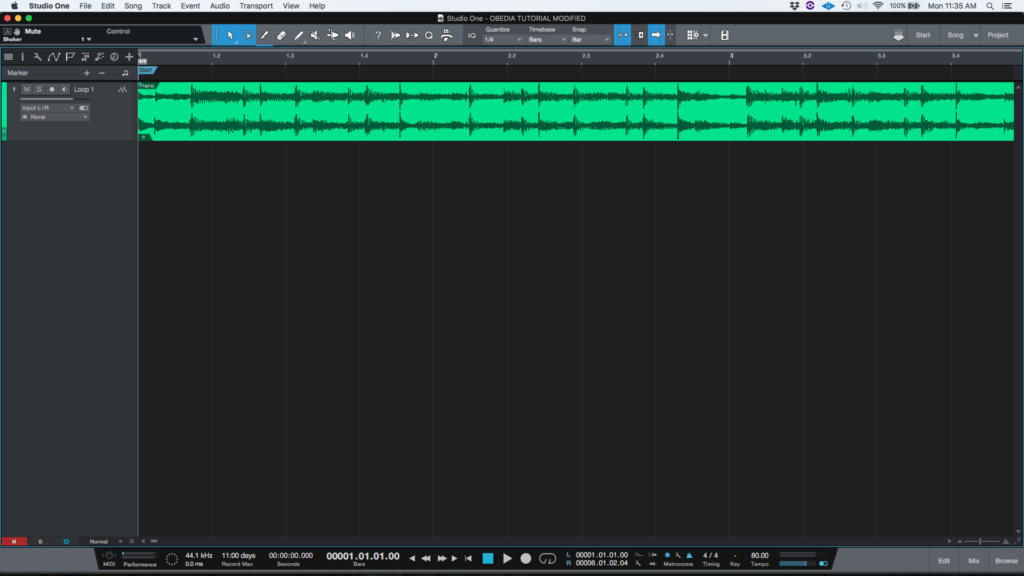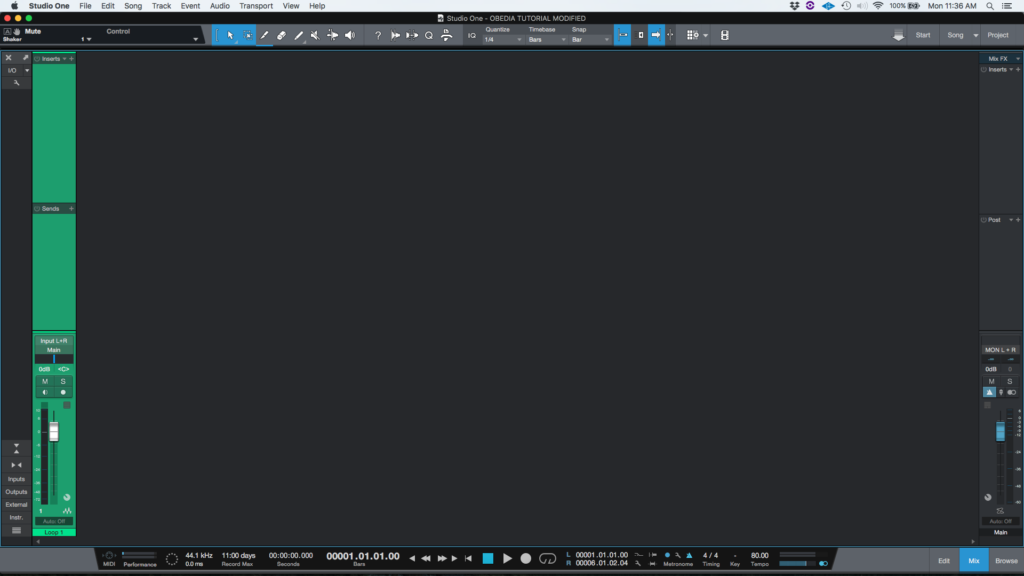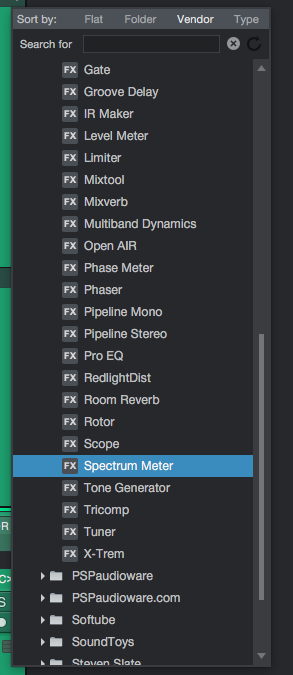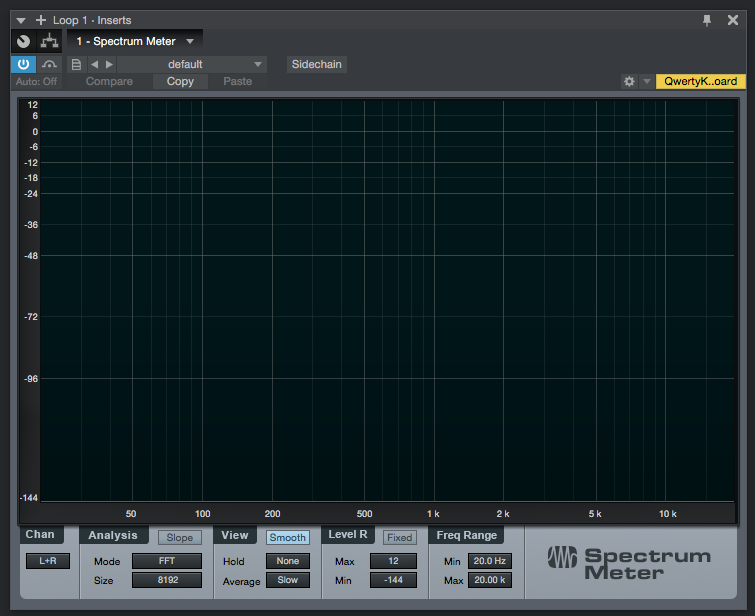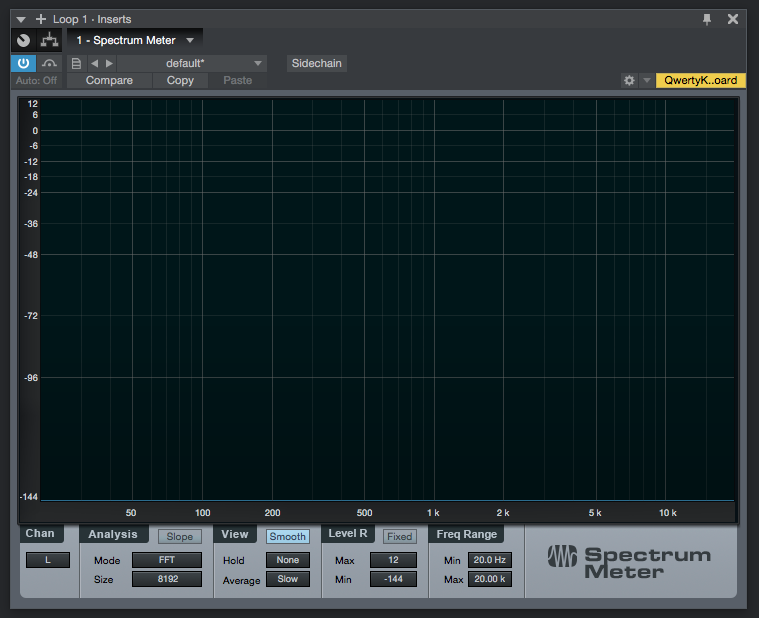The following tutorial shows the user how to use the Spectrum Meter Plugin in PreSonus Studio One 4.
Need a Pro Audio laptop to run Presonus Studio One 4 software and all of its features at its best? Check out the MC Mobile line of Pro Audio Laptops from PCAudioLabs.
On the modern days of audio mixing, the digital tools that engineers use in order to shape the recorded sound are called Plugins. Plugins can emulate the behavior of vintage analog pieces of gear, or simply act as clean/linear digital signal processors, performing tasks such as equalization, compression, limiting, expansion, gating, time-domain effects, etc. Studio One 4 comes with a variety of proprietary plugins that can help the user mix a music production completely “in-the-box”.
One of the most used inserts that come with Studio One is the Spectrum Meter, which can be defined as a device that lets the user evaluate the frequency content of an audio signal. This device is specially useful when the engineer is trying to identify a certain offending frequency that needs to be eliminated with an EQ or perhaps a frequency that needs to be boosted in order to give character to a certain instrument.
For the purpose of this tutorial, we will explain how to use the Presonus Spectrum Meter plugin in Studio One 4:
- Open or create a new Studio One 4 song:
2. Open and maximize the MIX tab:
3. From the inserts list of the track, select “Spectrum Meter”:
The Spectrum Meter plugin window will open as:
It is easy to see from the previous picture, the Spectrum Meter plugin has several parameters that can be explained as:
- Chan:
- L: left channel metering only.
- R: right channel metering only.
- L+R: Sum of left and right channels metering.
- L-R: Difference between left and right channels metering.
- Analysis:
- Oct-Band: Displays frequency divided into octaves.
- 3rd-Oct-Band: Displays frequency divided into 1/3 of an octave.
- 12th-Oct-Band: When selected, the bands in the 12th-octave meter correspond to the 12 musical tones in an octave.
- FFT: Fast Fourier Transform, displays frequency content divided into many bands.
- Waterfall/Sonogram: These two modes graph changes in frequency content and dynamics over time.
- Segments: This mode closely resembles the output of an FFT display but the X/Y grid is split up in uniform segments, rather than varying in resolution depending on frequency (like FFT does).
- Level Range:
- Min Level: Sets the minimum amplitude to be displayed for all frequencies.
- Max Level: Sets the maximum amplitude to be displayed for all frequencies.
- Frequency Range:
- Min: Sets the minimum frequency to be displayed.
- Max: Sets the maximum frequency to be displayed.
For the purpose of this tutorial, we will use the Spectrum Meter to display FFT of only the left channel. The Spectrum Meter plugin should be set as:
- Chan:
- L: Selected.
- Analysis:
- FFT: Fast Fourier Transform, displays frequency content divided into many bands.
- Level Range:
- Min Level: Default.
- Max Level: Default.
- Frequency Range:
- Min: Default.
- Max: Default.
4. Apply the previous configuration, and the Spectrum Meter plugin should look like this:
At this point we have successfully explained How to use Spectrum Meter in PreSonus Studio One 4. The tutorial has now finished.
Using Presonus Studio One 4 software to produce music would be ideal with one of our professionally designed PCAudioLabs Systems due our high-performance specifications in order to work with any of the Digital Audio Workstations supported. If you would like to order one of our PCAudioLabs computers, please call us at 615-933-6775 or click this link for our website.

